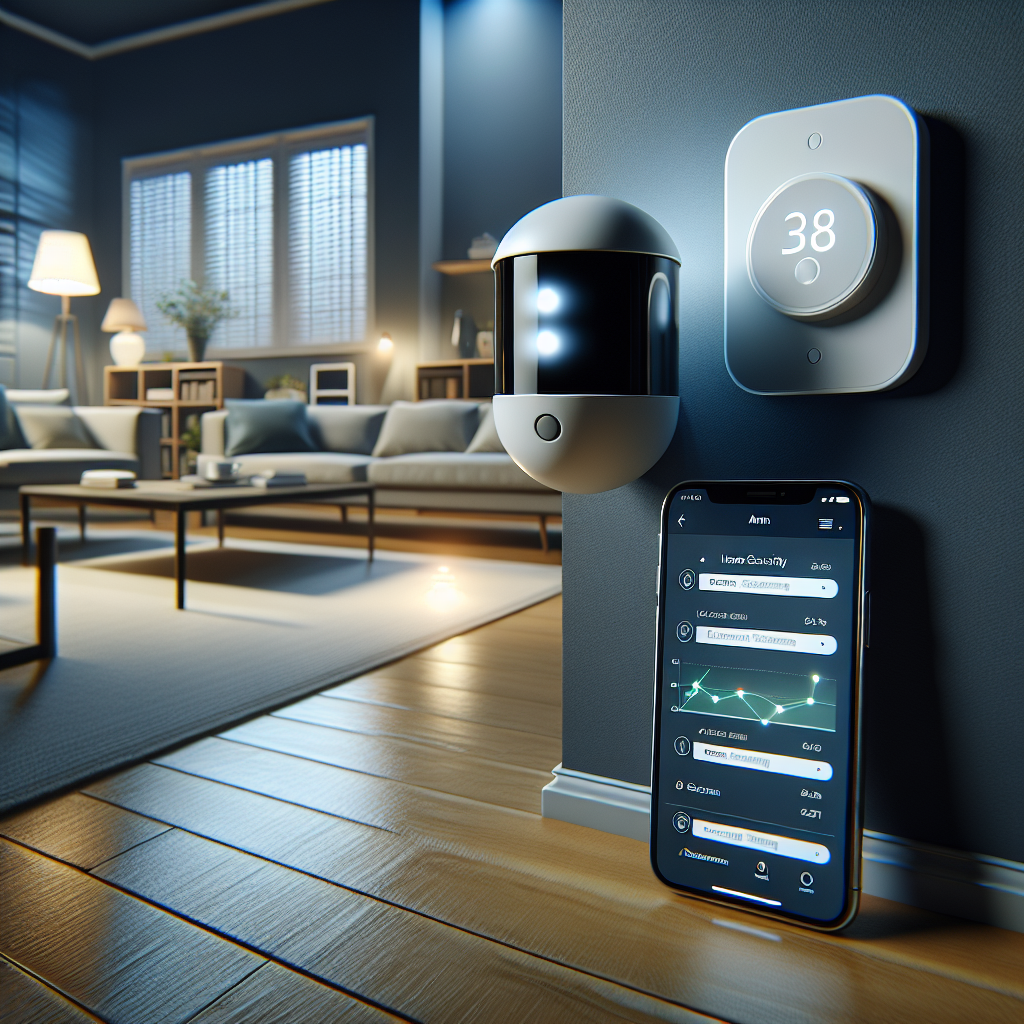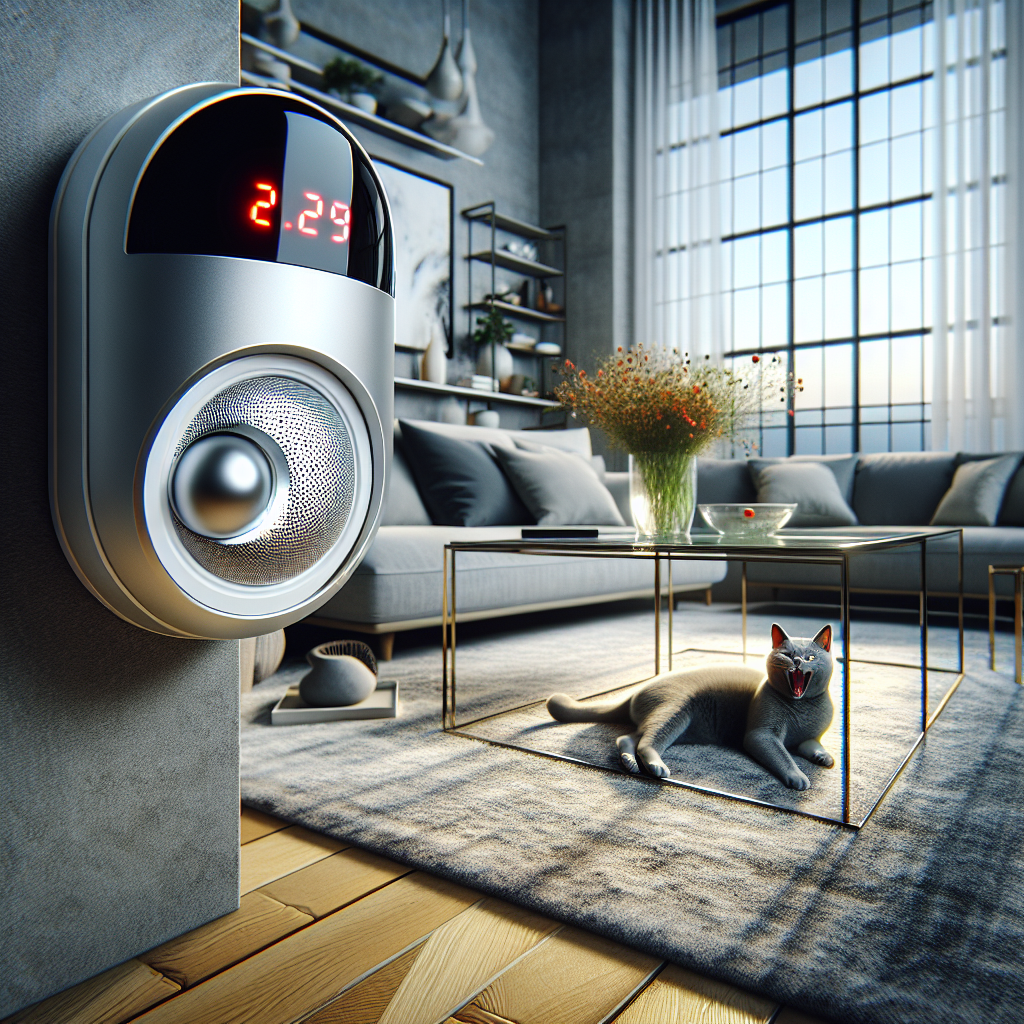Home security is paramount in today’s world, and one of the most effective ways to protect your home is with a motion sensor alarm system. This state-of-the-art technology uses sensors to detect any movement within your home, triggering a loud alarm to alert you and scare off potential intruders. With customizable settings and easy installation, a motion sensor alarm system provides peace of mind and 24/7 protection for you and your loved ones. Say goodbye to worries about break-ins or unauthorized entry – invest in a motion sensor alarm system for enhanced security and protection in your home.
Understanding Motion Sensor Technology

Motion sensors are an integral part of modern home security systems, providing an added layer of protection by detecting movement within a designated area. Understanding how motion sensors work and the different types available can help homeowners make informed decisions when choosing the right system for their needs.
How Do Motion Sensors Work?
Motion sensors work by detecting changes in the environment that indicate motion. These sensors are designed to detect infrared energy, microwaves, or a combination of both, depending on the type of sensor. When an intruder enters the sensor’s range, the device triggers an alarm or alerts the homeowner through a connected security system.
Infrared motion sensors, also known as Passive Infrared (PIR) sensors, detect heat signatures emitted by objects in their field of view. When a warm object moves across the sensor’s field, it triggers the alarm.
Microwave motion sensors emit microwaves and measure the reflection pattern to detect movement. These sensors are more sensitive and can detect motion through walls and other obstacles.
Dual technology motion sensors combine both infrared and microwave technologies to reduce false alarms. By requiring both sensors to be triggered simultaneously, these sensors provide a higher level of accuracy in detecting motion.
Types of Motion Sensors
-
Passive Infrared (PIR) Sensors: These sensors detect heat signatures and are commonly used in home security systems for their reliability and cost-effectiveness.
-
Microwave Sensors: Emit microwaves and measure their reflection to detect motion, providing added sensitivity and the ability to detect motion through obstacles.
-
Dual Technology Sensors: By combining both infrared and microwave technologies, dual technology sensors offer a more robust and accurate detection system, reducing false alarms and enhancing overall security measures.
Benefits of Installing a Motion Sensor Alarm System
-
Enhanced Security Features
Motion sensor alarm systems offer advanced security features that can detect any unauthorized movement within the protected area. These systems are equipped with sensors that can identify even the slightest motion, providing a higher level of security compared to traditional alarm systems.
-
Immediate Alerts
One of the key benefits of a motion sensor alarm system is the ability to receive immediate alerts in case of any suspicious activity. When the sensors detect motion, they trigger the alarm system, sending real-time notifications to the homeowner or security monitoring service. This swift response can help prevent potential break-ins or intrusions. -
Deterrent to Intruders
The presence of a motion sensor alarm system acts as a strong deterrent to potential intruders. Knowing that any movement will trigger a loud alarm and alert authorities can discourage criminals from attempting to break into the property. This added layer of security can significantly reduce the risk of burglaries and trespassing incidents.
-
Cost-Effective Solution
Investing in a motion sensor alarm system can be a cost-effective security solution in the long run. These systems are relatively affordable compared to other high-tech security measures and can help prevent costly losses due to theft or property damage. Additionally, the reduced risk of break-ins may lead to lower insurance premiums for the homeowner. -
Energy Efficiency
Motion sensor alarm systems are designed to be energy-efficient, as they only activate when motion is detected. This smart technology helps conserve energy and prolong the life of the system’s batteries or power source. By operating only when necessary, motion sensor alarms can provide effective security without wasting energy. -
Reduced False Alarms
Unlike traditional alarm systems that can be triggered by false alarms such as pets or moving objects, motion sensor alarm systems are less prone to false triggers. The advanced technology in these systems allows them to differentiate between human movement and other sources of motion, reducing the likelihood of false alarms. This accuracy ensures that the alarm is only activated when there is a genuine security threat.

Factors to Consider Before Installing a Motion Sensor Alarm System
When considering installing a motion sensor alarm system for home security, there are several crucial factors to keep in mind to ensure optimal protection for your property and loved ones.
-
Location Placement
Proper placement of motion sensors is essential for the effectiveness of the alarm system. Identify key areas that require monitoring, such as entry points like doors and windows, and strategically place the sensors in these locations. It is important to avoid placing sensors near sources of heat or direct sunlight, as these factors can trigger false alarms.
-
Pet-Friendly Options
If you have pets at home, consider investing in pet-friendly motion sensors that are designed to distinguish between the movement of pets and potential intruders. This feature helps prevent false alarms caused by your furry companions moving around the house.
-
Integration with Existing Security Systems
Before purchasing a motion sensor alarm system, assess its compatibility with your existing security setup. Ensure that the new system seamlessly integrates with any surveillance cameras, smart locks, or other security devices you currently have in place.
-
Compatibility with Smart Home Technology
In the age of smart homes, opt for a motion sensor alarm system that can be easily integrated into your existing smart home ecosystem. Look for systems that can be controlled remotely via smartphone apps or voice assistants for added convenience and accessibility.
-
Monitoring Options

Consider the monitoring options available with the motion sensor alarm system. Some systems offer self-monitoring capabilities, allowing you to receive real-time alerts on your phone, while others may require professional monitoring services for round-the-clock surveillance. Evaluate your preferences and choose a system that aligns with your monitoring needs and budget constraints.
Common Misconceptions About Motion Sensor Alarm Systems
-
False Alarm Triggers
- Motion sensor alarm systems are often criticized for false alarm triggers, but understanding the sensitivity levels can help mitigate this issue.
-
Proper calibration is essential to ensure that the system can distinguish between a genuine threat and a harmless movement, such as a pet wandering around the house.
-
Limited Coverage Area
- One common misconception is that motion sensor alarm systems have a limited coverage area.
- By considering the range and field of view of the sensors, homeowners can strategically place multiple sensors throughout the property to ensure comprehensive protection.
Maintenance and Troubleshooting Tips for Motion Sensor Alarm Systems
When it comes to ensuring the effectiveness of your motion sensor alarm system for home security, regular maintenance and troubleshooting are essential. Here are some key tips to help you keep your system in top working condition:
-
Regular Testing and Battery Replacement
It is crucial to test your motion sensor alarm system regularly to ensure that all components are functioning correctly. Set a schedule to test the sensors, alarms, and overall system at least once a month. Additionally, make sure to replace the batteries in the motion sensors as needed, typically every 6-12 months depending on the type of batteries used.
-
Addressing Interference Issues
Interference can be a common problem with motion sensor alarm systems, leading to false alarms or missed detections. To address interference, consider the following factors:
- **Environmental Factors**: Ensure that there are no obstructions blocking the sensors' view, such as curtains or furniture. Also, be mindful of environmental conditions like extreme temperature changes or humidity levels that could affect sensor performance.
- **Electrical Interference**: Other electronic devices or appliances in close proximity to the motion sensors can cause interference. Keep your sensors away from sources of electrical interference, such as microwave ovens, wireless routers, or cordless phones.
-
Consulting Professional Help When Needed
If you encounter persistent issues with your motion sensor alarm system despite troubleshooting efforts, it may be time to seek professional assistance. A security system specialist can conduct a thorough inspection, identify any underlying problems, and offer solutions to ensure optimal performance of your home security system.
FAQs on Motion Sensor Alarm System for Home Security
What is a motion sensor alarm system for home security?
A motion sensor alarm system for home security is a device that uses sensors to detect motion and trigger an alarm. These systems are commonly used to protect homes from intruders by detecting movement and alerting homeowners or authorities.
How does a motion sensor alarm system work?
A motion sensor alarm system works by using sensors to detect changes in the environment, such as motion or heat. When movement is detected, the sensor triggers an alarm, alerting the homeowner or authorities of a potential security threat.
What are the benefits of using a motion sensor alarm system for home security?
There are several benefits to using a motion sensor alarm system for home security. These systems can help deter potential intruders, provide peace of mind to homeowners, and offer an added layer of protection for their property and loved ones.
Are motion sensor alarm systems easy to install and use?
Most motion sensor alarm systems are relatively easy to install and use. Many models come with step-by-step instructions for installation, and can be set up within a short amount of time. Additionally, these systems are typically user-friendly, making them easy to operate for homeowners of all technical abilities.